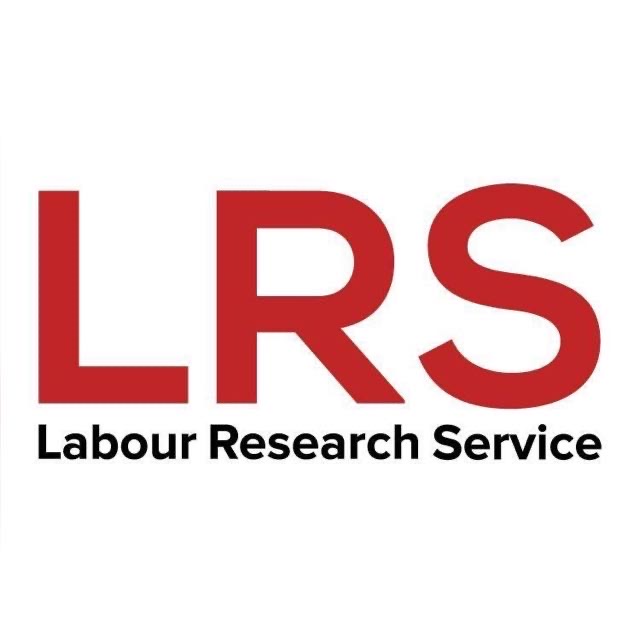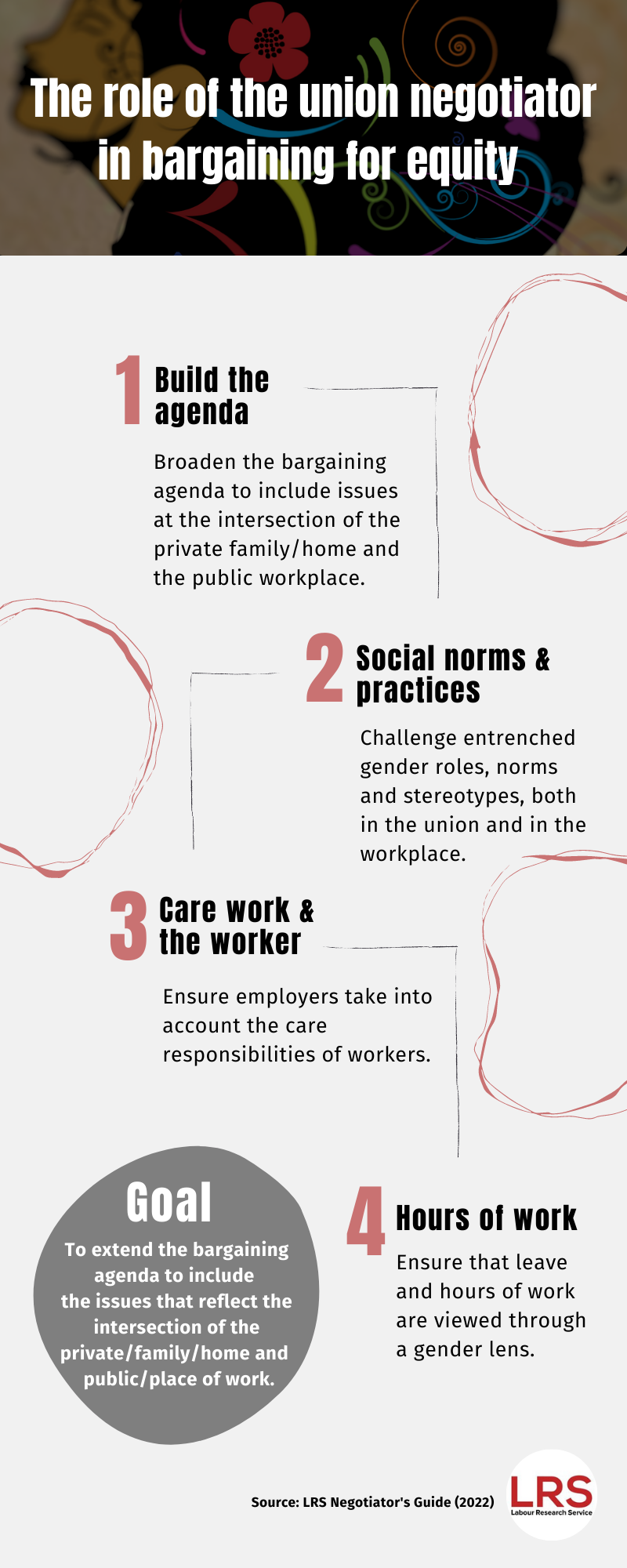There is a general stereotype that women are inferior to men and this can be seen in the gender pay gap. Even when women have same jobs, experience and education as their male counterparts, women worldwide still make on average 80% of what their male counterparts make, simply because they are women.
Equity bargaining is about ensuring that collective bargaining promotes equity in the workplace. It’s about tackling entrenched misconceptions about the role of women workers. The trade union negotiator’s aim is to extend the bargaining agenda to issues that reflect the intersection of the private sphere of family/home and the public sphere of work.
Engaging our constituency to identify demands
Workers join the union as whole beings and, in an effort to understand our constituency, we ask questions and engage in discussions. These enable us to understand what people are thinking and saying, what they are feeling and what they are prepared to do.
It is important to create safe spaces for union members to talk openly and honestly about their fears and aspirations.
Key terms you need to know
Gender roles: Gender roles refer to the roles and activities that society prescribes for and expects of men and women. Gender roles reflect assumptions about how men and women should behave. One such assumption is that women are seen as the natural caregivers and nurturers, more suited to domestic tasks such as cooking and cleaning, while men are seen as the natural leaders and providers, more suited to decision making. These assumptions are cultural, not natural.
Equity: Equity means being fair. Achieving equity means giving people what they need to make things fair. This means that disadvantaged groups may need to be treated differently according to their needs.
Gender equity: Gender equity means treating men and women fairly according to their respective needs. This may involve being treated the same, or being treated in different ways but having the same rights, benefits, responsibilities and opportunities.
Structural gender inequality: Structural gender inequality refers to the unequal division of power and resources between women and men, maintained by invisible rules that define masculinity and femininity.
Gender bias: Gender bias is when an individual unconsciously ascribes attitudes and stereotypes to a person based on their gender.
The bargaining team (the 'who')
We want “strong representation” in the negotiating team. But what does that mean?
- A strong bargaining team has an understanding of the issues that affect all workers in the workplace and is willing to challenge the gender stereotypes that they and others hold.
- A strong team will be sensitive, empathetic and willing to address the needs and conditions of women workers and all other marginalised groups in the workplace.
- A strong negotiating team includes women, but not as silent partners. In order to have active and outspoken women on bargaining teams, there must first be a process of dealing with the internalised gender stereotype that “only men can be leaders”. Gender stereotypes affect both women and men. When workers see only men in leadership positions, there is an assumption that men are naturally better leaders. This stereotype is challenged by having women in bargaining teams.

Preparing for bargaining
1. Assigning roles
A bargaining team is elected at the beginning of the bargaining process. At this stage, we need to be conscious of not assigning roles based on gender stereotypes. If for example, we assume women are not good spokespersons or only capable of administrative roles, we might assign them the role of minute takers as a result. This can be a self-fulfilling prophecy, as the more you silence women, the more silent they become.
2. Planning and strategising
Women workers need a space and opportunity to identify and rally around the issues that affect them as women workers. In meetings and discussions, union leaders can:
- Speak to women about the issues in the workplace and union that affect them;
- Make a short list of the things that matter most to women workers;
- Identify where, when and how these issues might be different from those that affect male workers.
3. The WHERE and HOW
The choice of venue or online platform for negotiations sets a psychological tone to the negotiation process, and it is therefore important that specific needs and conditions of all members of the team are taken into account. For example, members of the team living with disabilities might need special conditions to ensure their full participation e.g. wheelchair ramps and disabled-friendly toilets. Women members of the bargaining team will need to feel and know that they can access their venue safely and that they will not be faced with security challenges.
4. The WHEN
There is an argument that timelines and deadlines are necessary to create a sense of urgency and ‘push’ bargainers to agreements. Timeframes need to take into account the home and care work that women workers particularly carry the responsibility for. Meetings that carry on after work and late into the evenings will often have implications for the involvement of women in the bargaining teams.
5. The ILO suggests some helpful steps in the ongoing fight for equal rights:
- Promoting gender equality in employment doesn’t end with the signing of a collective agreement. Follow up to ensure the awarded rights are implemented.
- Ensure that the negotiated policies, rights and benefits are communicated to all workers, including non-permanent workers.
- Collect data regularly to monitor the number of women and men that are hired, promoted and dismissed, as well as the number of workers in all job categories, salary levels and training programmes.
- Regularly monitor the implementation and effectiveness of collective bargaining policies, rights and benefits. Think forward to what can be achieved during the next round of collective bargaining.
- Deal with equality issues in education and training programmes.
- Publicise the work your union has done on behalf of women as an organising strategy. Also, publicise the union’s objectives for bargaining and the strategies for achieving them.
Takeaway resource: Know the typical challenges women workers face and the critical demands for the bargaining table | LRS Bargaining for Equity resource [PDF].








